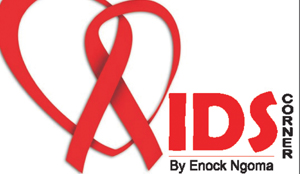 JUST browsing the Internet the other day, I came across the following article published in the International News, in the USA and I thought this is a good story for the young people that have just tested HIV positive and are put on ARVs:
JUST browsing the Internet the other day, I came across the following article published in the International News, in the USA and I thought this is a good story for the young people that have just tested HIV positive and are put on ARVs:
While bringing new drugs to market is important for increasing life expectancy in younger people with HIV, lowering the toxicity of those drugs may have an even greater health impact on all HIV patients, a University of Pittsburgh Graduate School of Public Health analysis reveals.
The research, supported by the National Science Foundation (NSF) and National Institutes of Health (NIH), and published in the journal PLOS ONE, used a computer simulation to examine what would happen if guidelines for starting HIV treatment took into account the rate of new drug development and the toxicity of those drugs.
“The side effects of treatment remain one of the primary reasons that HIV drug regimens are discontinued,” said senior author Mark Roberts, M.D., M.P.P., professor and chair of Pitt Public Health’s Department of Health Policy and Management. “By decreasing the toxicity and side effects of HIV drugs, you increase the amount of time that patients can stay on that life-saving treatment regimen. Some side effects, such as increased cardiovascular risk, also cause problems that directly contribute to premature mortality.”
The simulation, which built upon a model developed at New York University School of Medicine, found that if the toxicity of new HIV drugs is reduced compared to existing drugs, those new drugs will increase the patient’s quality-adjusted life expectancy by as much as 11 percent, or more than 3 years.
“Quality-adjusted life years” and “quality-adjusted life expectancy” are measures that analysts use to determine the value of different medical actions. For example, a potentially life-saving drug that was highly toxic and left a patient debilitated would have a lower value than a life-saving drug that didn’t have such side effects.
New HIV drugs are approved for market nearly twice a year and recently revised World Health Organization guidelines on the initiation of HIV treatment recommend that, with this rate of drug development, all HIV patients start treatment before their immune system is significantly compromised.
Pitt Public Health’s simulation backed this recommendation, finding that, even at current drug toxicity levels, young people with HIV add nearly two years to their lives by initiating HIV treatment regimens soon after infection.
Antiretroviral therapy for HIV typically consists of the combination of at least three drugs that help control HIV. However, over time, these drugs become less effective.
In younger patients, doctors have tended to wait longer to start antiretroviral therapy because those patients will have to be on the drugs the longest in order to live an average lifespan. As such, they’ll need the drugs to be effective longer and have fewer side effects.
“This availability of new drugs means that as the drugs a patient is on become less effective, doctors can adjust the therapy to use a new, more effective drug,” said Dr. Roberts. “And if that new drug has a low toxicity and is well-tolerated by the patient, then they are more likely to take it regularly so that it is as effective as possible.”
(Source: http://www.medicalnewstoday.com/releases/278828.php)
This is important because in some cases, people living with HIV tend to ignore the side effects of the ARVs that they are taking or simply do not report these side effects to their health care provider. It is important for anyone on ARVs to be able to inform the health care provider about any side effects so that further tests on the patient can be carried out or the drugs can be changed.
For comments you can get in touch with me on knoxngoma@gmail.com or text/call 0955883143






